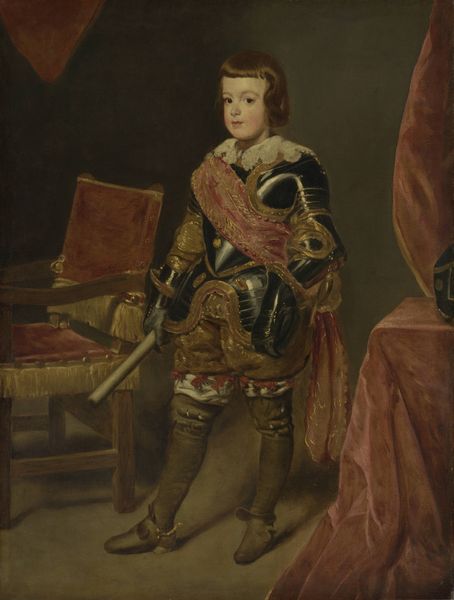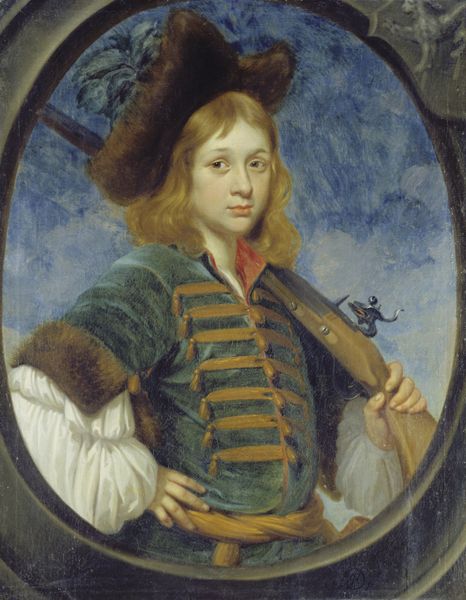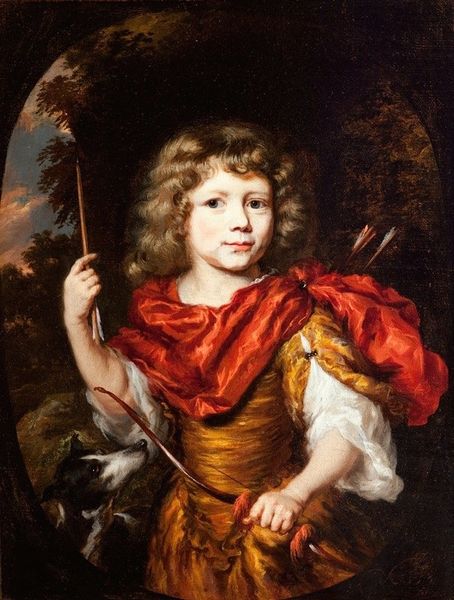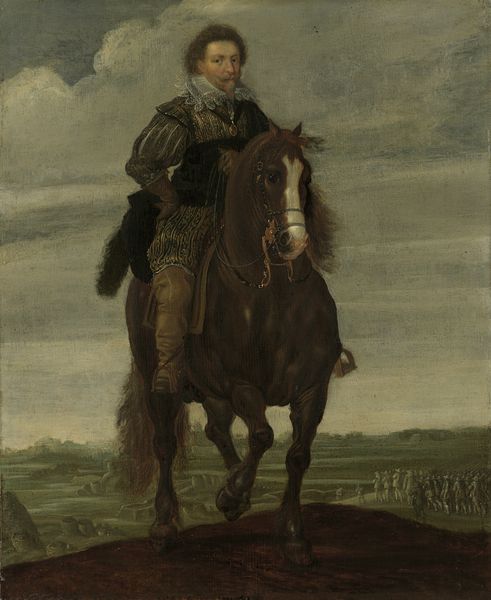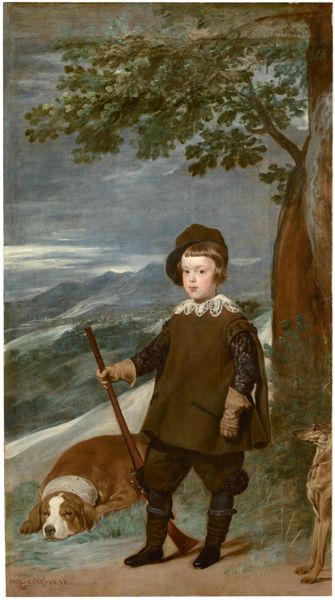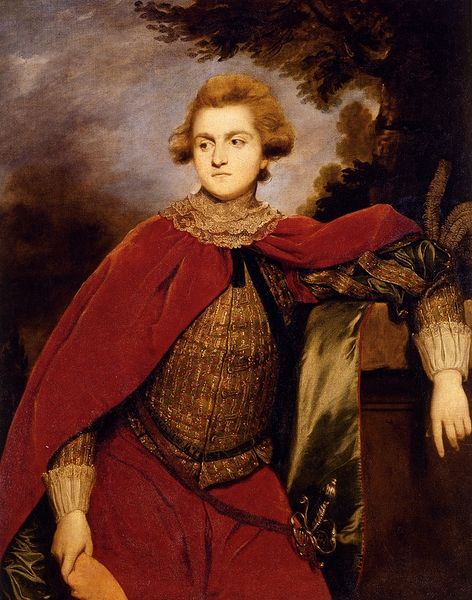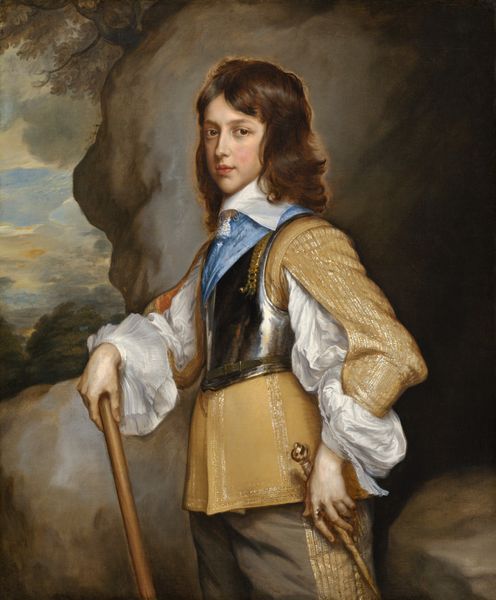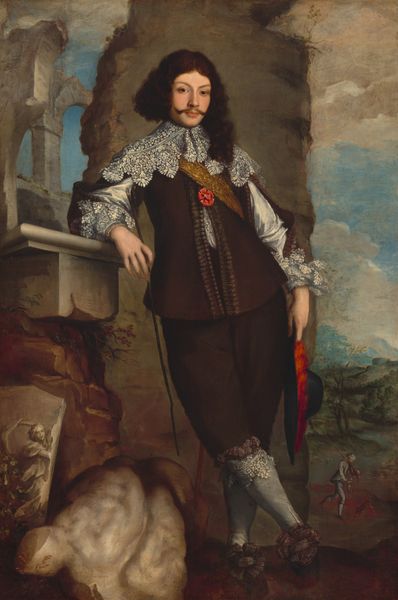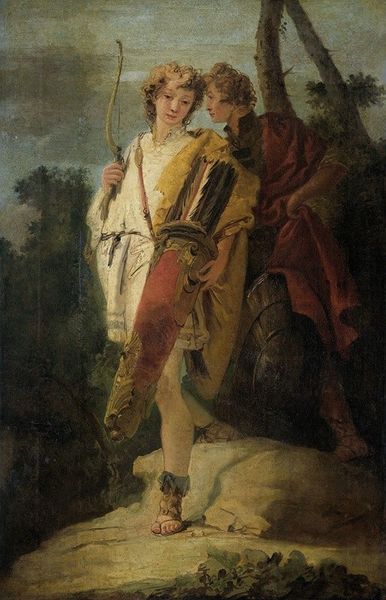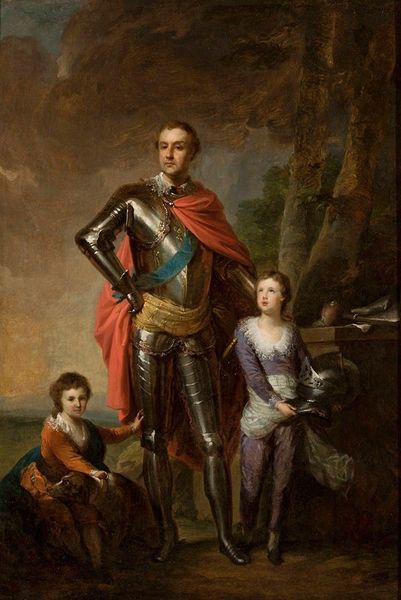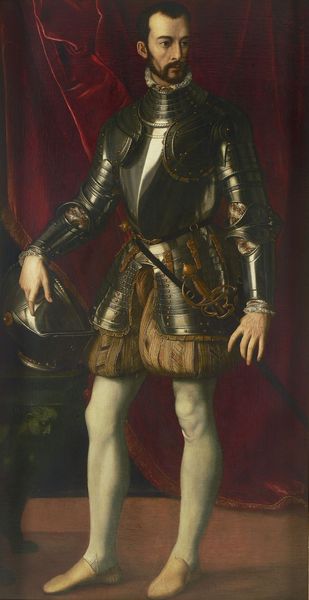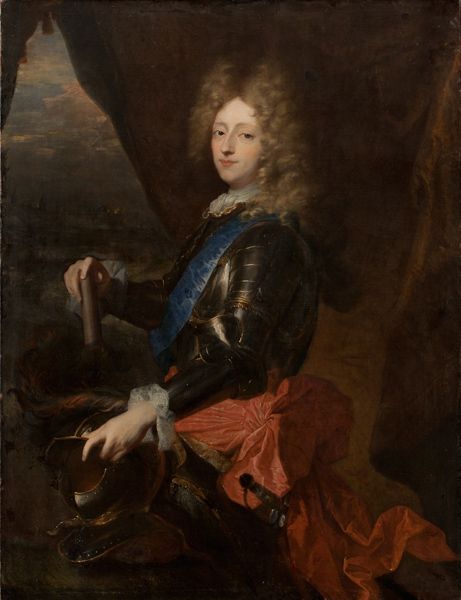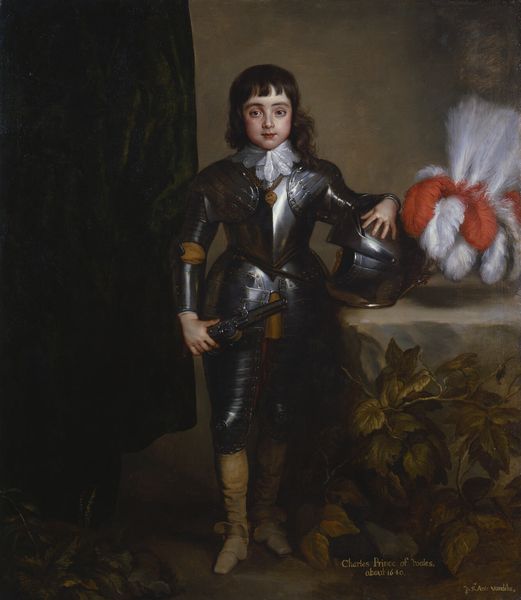
oil-paint
#
portrait
#
character portrait
#
baroque
#
dutch-golden-age
#
oil-paint
#
landscape
#
charcoal drawing
#
figuration
#
animal portrait
#
portrait drawing
#
genre-painting
Dimensions: height 124 cm, width 91 cm, depth 8 cm
Copyright: Rijks Museum: Open Domain
Curator: Looking at Dirck Dircksz. van Santvoort's oil painting from 1644, we see a portrait identified as Martinus Alewijn. What are your initial thoughts? Editor: It's unsettling, honestly. The setting feels like a stage, a fabrication. It seems to be deliberately evoking some rustic ideal, but for what purpose? Is it just about portraying wealth through a supposed pastoral innocence? Curator: Perhaps. Notice how the pastoral element itself functions symbolically. Sheep traditionally represent gentleness and innocence, attributes they seem to impose onto the boy. Consider how often young figures were depicted in similar contexts during this era. Doesn't it strike you as a way to imbue them with virtue by association? Editor: That's the key—"imposing." It's a visual branding. I wonder how much agency Martinus actually had in this portrayal. Children were often tools for family image-making back then. It is more of how the family sees them rather than how the boy would portray himself. Curator: Absolutely, the family's standing is at stake. But also think about the dog—the loyal hound often represents fidelity and vigilance. How are those characteristics reflected back onto Martinus, suggesting his own potential for loyalty and leadership? These are traits vital to his family’s image. Editor: It makes you consider the very nature of portraiture, particularly child portraiture, in the 17th century. Is it documentation or aspirational fiction? And who is this fiction intended to serve? The dark, somber background serves the interests of the bourgeois family standing, not so much for the subject of this work. Curator: I'd argue that there's also an element of wishful thinking. Placing Martinus within this setting serves as an allegory, transforming the individual into an ideal. These symbols are meant to suggest more than meets the eye; it’s the representation of a perfect character through careful coding. Editor: Still, the heavy symbolism and artificial setting make me deeply skeptical. I question the inherent power dynamics present and who really profits from the staging. It reveals how image construction was always inherently political, always serving someone's interests, even in what appears to be a simple portrait. Curator: An unsettling portrait indeed! The symbolic loading and cultural values represented are complex, offering insight into family and period aspirations through iconography. Editor: Yes, and it also opens our eyes to power relations inherent to how even children’s images can promote specific values that uphold larger cultural narratives.
Comments
rijksmuseum about 2 years ago
⋮
Children were also portrayed in the Netherlands in the 17th century. This canvas presents Martinus Alewijn, the ten-year-old son of an Amsterdam merchant. He is not simply eternalized in paint as the wealthy city boy that he was, but rather in the guise of a shepherd holding a staff sitting beneath a tree, with a dog and some sheep. These motifs reference country life and hunting. They underscore the family's prominent social standing and affluence.
Join the conversation
Join millions of artists and users on Artera today and experience the ultimate creative platform.

